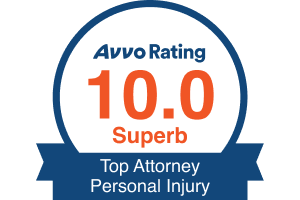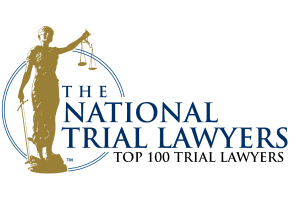Defenses Common to Pedestrian Accidents (and How to Overcome Them)
A. Improper Crossing Situations and How to Fight the Defense
One of the strongest defenses in a pedestrian accident case is that the pedestrian crossed the roadway improperly. Generally, a defendant will argue that a pedestrian was contributorily negligent and/or assumed the risk by entering the roadway. However, assumption of the risk is seldom an appropriate defense in a pedestrian accident because the pedestrian must have knowledge of the very specific risk he or she is assuming and then voluntarily chose to assume it. See Juvenalius v. District of Columbia, 955 Ap.2d 187 (D.C. Court of Appeals, 2007). (Trial court erred in giving jury instructions on assumption of risk). However, contributory negligence is an extremely strong defense in a pedestrian case in which the pedestrian has entered the roadway at a location other than a crosswalk. This is due to the fact that contributory negligence focuses on the objective reasonableness of the pedestrian’s conduct. Id.
There are a variety of manners in which this defense can be defeated, depending upon the facts of your particular case. First, an attorney must thoroughly analyze whether or not the crossing was truly improper. In order to do so, the attorney should initially explore the statutes related to the right of the pedestrian to cross the roadway at the location where it was traversed. Generally, a pedestrian does have a right to cross the roadway when a crosswalk is not readily available. Accordingly, the mere fact that a pedestrian is in the roadway alone does not give rise to the pedestrian’s negligence.
A defendant will often argue that a pedestrian who crosses against a don’t walk sign even when the light is green in his direction has violated the statute requiring him to obey a pedestrian traffic control. A plaintiff’s attorney can often effectively argue that since the light was green in the direction of the pedestrian’s travel it was not improper for him to choose to cross the roadway and that a driver has a continuing obligation to look for any pedestrian in the crosswalk. While such a case does present challenges, a driver is not relieved of his or her responsibility to avoid pedestrians which are readily visible.
Second, Defendants often argue that a pedestrians has been improperly crossing the roadway when they actually entered the crosswalk with a walk sign which had later changed to don’t walk prior to the collision occurring. It’s important to note so long as pedestrian entered the crosswalk with a walk sign in their favor, they have a right to remain in the crosswalk even against a don’t walk sign. M.S.A. § 169.06, Subd. 6 (Minnesota statute). Accordingly, an attorney should thoroughly investigate what signage was present at the time the pedestrian entered the crosswalk and not simply when the collision occurred.
B. Contributory and Comparative Negligence Issues – – How to Keep the Percentage of Fault Attributed to Plaintiff Below 50%
In the majority of states, a plaintiff cannot recover for damages in the event their negligence is 50% or greater. 21 Am.Jur. Trials 715, Trial of a Personal Injury Case in a Comparative Negligence Jurisdiction (Originally published in 1974). Accordingly, it is extremely important for a plaintiff’s attorney to seek to keep the negligence attributable to his client below 50%. One of the best avenues in accomplishing in this objective is to identify other responsible parties beyond the defendant driver. This could be in the form of a government or private entity who created a road defect, a passenger who created a distraction for the operator in the car or an individual who was texting with the driver. When more than one defendant is involved in the litigation, a jury will have a more difficult time attributing 50% of the fault to the plaintiff alone. Rather, very often a plaintiff’s attorney can limit the plaintiff’s negligence to one-third or less of the overall negligence related to the cause of the incident by spreading out the negligence between multiple parties.
Another manner in which to seek to keep the plaintiff’s negligence below 50%, is to emphasize to the jury that in the event a plaintiff’s negligence was found to be 50% or greater, he or she will not be able to recover for their injuries. Juries, who are often unaware of the complete bar to recovery for a plaintiff whose negligence is 50% or greater, are uncomfortable denying the plaintiff any recovery when a defendant’s negligence is clear.
C. Multi-Causal Accidents – – Which Defendants to Target and Why
When a lawyer faces the potential of filing suit against multiple defendants in a pedestrian accident case, he must initially evaluate whether or not each of the defendants should be made a party to the litigation. This analysis must start with the determination of whether or not the defendant has available insurance coverage for the accident and, if so, the level of coverage available. When faced with a situation in which multiple parties are liable for a pedestrian accident, but one defendant is either uninsured or substantially underinsured, the strategic choice is to settle with the most culpable, but least insured, defendant and then file action only against the remaining defendant who has adequate coverage, but is less culpable. In this manner, a jury is faced with a clear decision whether or not to enter judgment against the less culpable defendant, rather than divide an award between various defendants or, in the worst-case scenario, to find in favor of the least culpable, but most insured, defendant.
It’s important to analyze whether or not your state provides for unrestricted joint and several liability for defendants in an action. Under traditional tort law, if a defendant is jointly and severally liable, a plaintiff is entitled to recover the full amount of an award against them solely even if their negligence was limited. 1 Comparative Negligence Manual, Sect. 1:24, Joint and Several Liability (3d ed. M.) However, many states have now modified the traditional joint and several liability rule thereby limiting the exposure of the less culpable defendants. 54 J.Air L. & Com. 627, The Reform of Joint and Several Liability Theory: A Survey of State Approaches, (1988). In some states, even if the most culpable defendant is not sued, a defendant will have a right to file a notice of apportionment to the nonparty who is most culpable and require that party to be listed on the jury form for purposes of apportionment. O.C.G.A § 51-12-33, Apportionment of Damages in Actions Against More than One Person According to the Percentage of Fault of Each Person (Georgia Statute). In this circumstance, the defendant is only held liable for the percentage of fault attributed to him for the accident. Id. This is an effective means for a defendant to limit liability in a case.
All decisions about which defendants to actively target and pursue in litigation should be made prior to beginning of litigation, when possible. This makes investigation of an incident imperative. In the event a plaintiff has sued a defendant who he does not wish to remain in the case, it would be best if the claims against that defendant are resolved as early as possible in the litigation so the defendant can be dismissed. In this manner, the attorney is able to lessen the number of attorneys attacking the plaintiff’s case whether on liability, causation or damages. There is no reason to maintain a defendant in litigation throughout its course once a determination has been made that the case will be stronger when tried to a jury without the defendant present.
D. Deflating the Equal Knowledge Defense in Premise Liability Pedestrian Accidents
One of the most central defenses in any premise liability pedestrian accident case is that the plaintiff had equal knowledge with respect to the hazard as a defendant. 65A C.J.S. Negligence Section 734, Plaintiff’s knowledge relative to that of Defendant (2015). This issue generally arises when the owner of the premises only had constructive knowledge of the hazard and not actual knowledge. When a premise owner has actual knowledge of a hazard, it is the rare occasion when the pedestrian will have equal knowledge to the hazard. Johnson v. Kimberly Clark, 233 Ga. App. 508, 504 S.E.2d 536 (1998) (summary judgment improper when evidence supported premise owner’s actual knowledge due to placement of poles by its employees). However, this can occur when the pedestrian frequents the premises where the accident occurred. Poythress v. Savannah Airport Commission, 229 Ga. App. 303, 494 S.E.2d 76 (1997) (patron who previously traverses area of fall is presumed to have knowledge of a static defect).
When initially accepting a case, it is extremely important for an attorney to thoroughly evaluate his or her potential client’s prior knowledge of the hazard which caused the fall. The potential client should be asked if they had ever visited the premises previously, how they generally entered and exited the premises and if they had ever been through the area where the fall occurred prior to the date of the fall. Id. If an injured pedestrian has never been at the location of fall previously, then the attorney must analyze whether or not the hazard which caused the fall was such an open and obvious hazard that the plaintiff should have observed it. 65A C.J.S. Negligence §741, Open obvious dangers (2015). If the hazard was of this nature, generally, the attorney should decline becoming involved in case. However, if the individual had never traversed the area previously and the hazard was not one that was open or obvious to the casual observer, then it is unlikely that the defendant will be able to obtain summary judgment in the matter. Robinson v. Kroger Company, 268 Ga. App. 735, 493 S.E.2d 403 (1997) (summary judgment inappropriate when plaintiff had never previously traversed area of hazard and the hazard was not open and obvious).
A more difficult and challenging case is when the individual has previously traversed the area where the fall occurred, but claimed for various reasons the hazard was not present previously or not readily observable. Lore v. Suwanee Creek Homeowners Association, Inc., 305 Ga. App. 165, 699 S.E.2d 332 (2010) (plaintiff who was generally aware of presence of sinkhole did not have specific knowledge of sinkhole and therefore, did not have equal knowledge with premise owner). All attorneys should enter such cases cautiously and with the full understanding that there is a more substantial risk of loss in the case. However, such cases can be successful when the nature of the hazard is not readily observable.
Likewise, it is important to consider the manner in which the pedestrian approached the hazard on the date of the fall and if that approach was the same or different than when they previously traversed the area. Id. For instance, if a pedestrian has been to a building on numerous occasions, but entered the building in a different manner than he was accustomed, then this may explain why they were not aware of the hazard prior to the day of the fall. Likewise, if a pedestrian is aware of generally hazardous conditions in the area, courts usually hold such knowledge does not establish that the plaintiff had equal knowledge of the hazard on which he or she specifically fell. Little v. Alliance Fire Protection, Inc., 291 Ga. App. 116, 661 S.E.2d 173 (2008) (plaintiff’s general knowledge of hazardous conditions is insufficient to establish knowledge of specific hazard). Rather, the equal knowledge rule is generally limited to the very specific hazard on which a plaintiff falls.
Another approach to defeating arguments that a plaintiff has equal knowledge of a hazard, is to utilize a human factors expert to explain why a reasonable person traversing an area would not observe or be alert to the hazard on which the plaintiff fell. Juries are generally more accepting of explanations regarding why a person fell which have some basis in science or engineering. Likewise, the claim for a pedestrian accident may be greatly improved by employing a well-qualified engineer or architect to explain why a specific design was inappropriate in a static defect case. This is especially true if a building code violation can be demonstrated for the hazard which caused the injury. Vega v. Eastern Courtyard Associates, 117 Nev. 436, 24 P.3d 219 (2001) (negligence per se instruction justified by expert testimony regarding building code violation).
E. Medical History – No Mention of Accident or Mechanism of Accident
One of the greatest challenges in any pedestrian accident case relates to causation. Often, a pedestrian is not immediately aware of their injuries and, therefore, does not seek medical treatment until sometime after the accident occurs. In these circumstances, the pedestrian may not necessarily attribute their medical symptoms to the accident which occurred. When this issue arises, pedestrians often provide an incomplete medical history to the doctors they are seeing because they don’t know what caused their symptoms to arise. Only later do they recognize or relate the pedestrian accident to the symptoms which developed. In this situation, the defendant is in an excellent position to argue that the pedestrian accident did not cause the injuries which are the subject of the litigation. Prior to the commencement of litigation, a lawyer representing a pedestrian must be prepared to address this defense head-on.
One of the best tools at the disposal of an attorney dealing with a causation issue of this nature is to identify witnesses who are able to testify that the pedestrian’s symptoms arose on the same day or next day after the accident. Often these individuals are family members, but it is best if the attorney can identify nonfamily members who can attest to the symptoms suffered by the plaintiff. These individuals often can be found through the pedestrian’s workplace. A pedestrian who has been injured may complain to others about the accident at his or her place of employment and describe some of their initial symptoms which are occurring. Any individuals in the plaintiff’s workplace who can attest to the early complaints of the symptoms in the same areas in the body which were later complained about by the pedestrian helps support the Plaintiff’s argument that the injuries were caused by the accident.
Another issue that is often faced is that medical personnel fail to record the history provided by the pedestrian at the time of their treatment. In this circumstance, a medical record will simply describe that a pedestrian is having pain in certain area of their body and state that the pain had commenced within a certain period of time prior to their visit to the doctor. In order to address a medical record silent with respect to the cause of the symptoms, it is often very valuable for an attorney to meet with the treating doctor or other medical provider to discuss the injured party’s treatment. In doing so, the doctor may have an independent recollection that the patient did describe the accident. In the event the doctor does not recall the patient describing in the accident, then an attorney should work to neutralize the doctor’s testimony by seeking to have the doctor simply verify that only the symptoms were discussed. In the end, an attorney will have to evaluate the doctor’s testimony to determine whether or not the lack of a medical history related to this specific incident can be overcome. It is important as part of the analysis to determine the temporal relationship between the treatment and the accident. The more distant in time the treatment is from the accident, the less likely a jury is to accept a pedestrian’s explanation related to why the accident was not mentioned when they provided a history to the medical provider.







